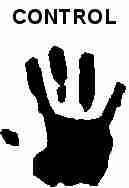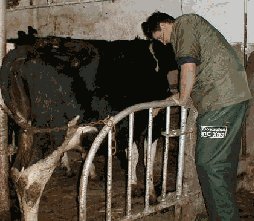Control Approach
 Both civil and common law require employers to do everything to control risk - "so far as is reasonably practicable", which says that the employer satisfies their "duty of care" if the costs of rectifying the situation seriously outweigh
the risk.
Both civil and common law require employers to do everything to control risk - "so far as is reasonably practicable", which says that the employer satisfies their "duty of care" if the costs of rectifying the situation seriously outweigh
the risk.
Control of Risks
When controlling risks, apply the principles below, if possible in the following order:
- try a less risky option (eg switch to using a less hazardous chemical);
- prevent access to the hazard (eg by guarding);
- organise work to reduce exposure to the hazard (eg put barriers between pedestrians and traffic);
- issue personal protective equipment (eg clothing, footwear, goggles etc); and
- provide welfare facilities (eg first aid and washing facilities for removal of contamination).

There a number of ways to reduce noise exposure. The Control of Noise at Work Regulations 2005 (the Noise Regulations) set out that has to be done to prevent or reduce risks to health and safety from exposure to noise at work. They require specific action at certain action and limit values.
They apply to employers, employees and the self-employed.
The noise action levels are defined in terms of daily noise exposure (the average over the working day), and peak noise exposure (sudden noises).
The ‘lower exposure action values’ are 80 dB for daily exposure and 135 dB for
peak noise. The ‘upper exposure action values’ are 85 dB for daily exposure and
137 dB for peak noise.
The limits, which must not be exceeded, are 87 dB for daily exposure, and 140 dB
for peak noise – but note that in checking whether the limits have been exceeded,
you can account for the effect of any hearing protection being worn.

While some pesticides have been banned, it is considered that the risks of the remaining ones can be controlled by proper procedures. To ensure these control measures are followed there are laws (COPR/COSHH), along with a Code of Practice for farmers to follow
1. Ban all pesticides - Many have been banned including DDT, Dieldrin, & Lindane
2. Closed systems of mixing ( examples)
3. Lower doses with more controlled application - Tom's stuff.
4. Personal Protection
5. Monitoring levels in workers (US Study of OPs)
 What is the best way to prevent zoonose infections?
What is the best way to prevent zoonose infections?
1. Inform workers of dangers
2. Prevent workers entering areas where may be infection
3. Kill all known zoonoses
4. Monitor presence
Licensed under the Creative Commons Attribution 2.5 License
LANTRA Awards: Controlling Risks in Agriculture Level 3